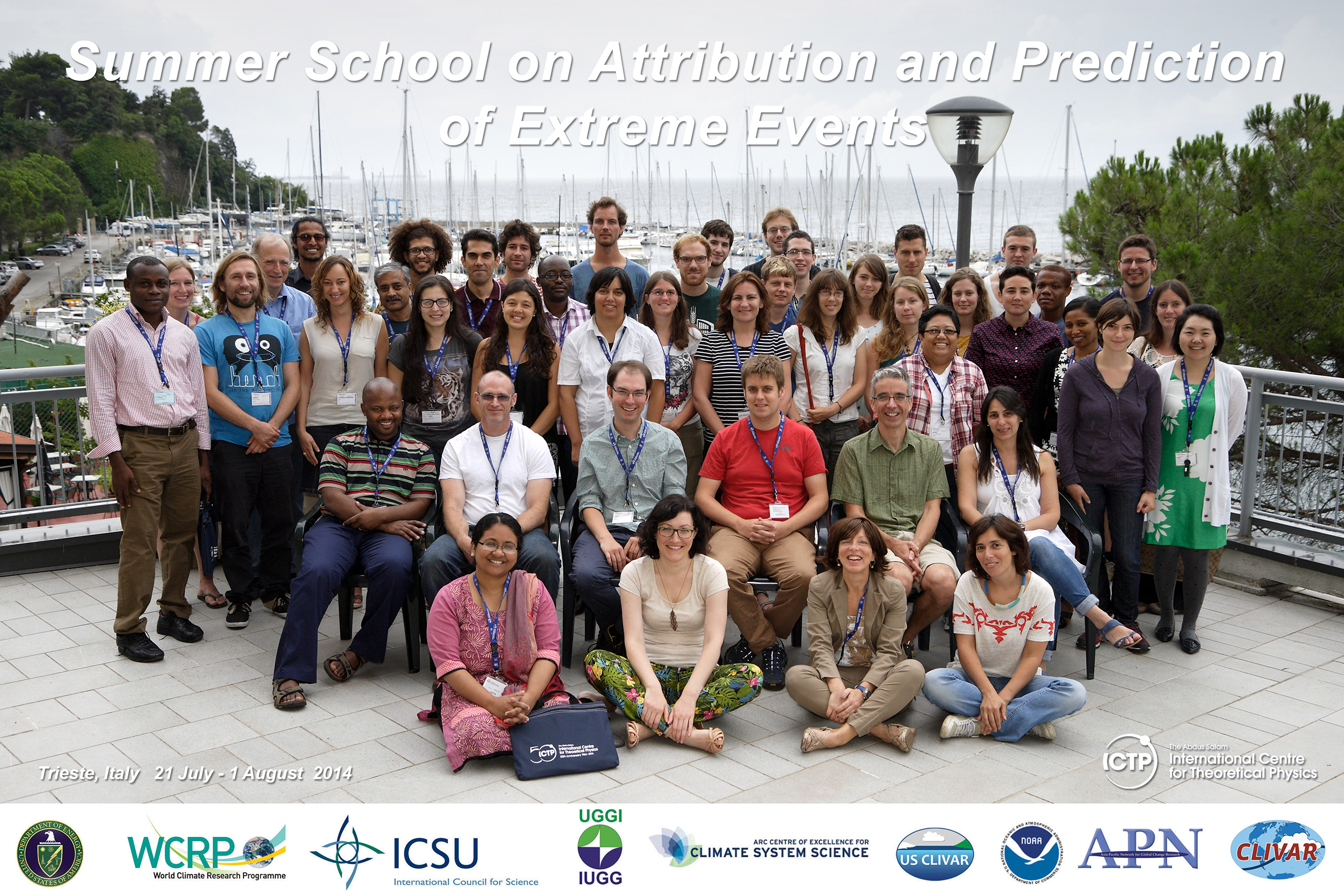3. Detecting human influence in ETCCDI temperature indices
Faculty: F. Zwiers and H.Q. Wen
Participants: H. C. Nnamchi, C. E. Iles, M. J. Hauser, R. H. Rimi, B. Mueller
Both cold and warm temperature extremes have warmed since the middle of the 20th century, and a number of detection and attribution studies have demonstrated that human influence on the climate system has very likely contributed to this warming (IPCC, 2013). It is also widely accepted that human influence has affected the characteristics of warm spells/heat waves and other indicators of temperature that are related to impacts, such as the number of frost days per year (days with minimum temperature below 0C), the number of tropical nights per year (days with minimum temperature above 20C, a key factor associated with the health impacts of heat waves), and the number of warm days per year (days with daily maximum temperature above 25C). While it is generally accepted that human influence has affected these indices, this has not yet been confirmed with formal detection and attribution studies. The objective of the project is, therefore, to use formal detection and attribution methods to determine whether this acceptance, which is reported in IPCC assessments, is in fact, reasonable. This will involve (i) the careful assessment of a range of observed and simulated temperature indices that are contained in the HadEX2 observational extremes indicators dataset (Donat et al., 2013) and that have been extracted from CMIP5 simulations (Sillmann et al., 2013) respectively, and where appropriate, (ii) the application of well established detection and attribution methods (e.g., Hegerl and Zwiers, 2011) to determine whether observed changes in these indices can be attributed to human influence on the climate system. The indicators need careful assessment prior to becoming a subject of a detection and attribution analysis because model biases, or index definitions that are inappropriate for the climate to which they are applied, may create situations in which the indices become ineffective as indicators of variability or change.
The project should be feasible for students who are learning about extremes, extremes indices and detection and attribution methodology since the necessary data resources to undertake this study are readily available, and since it should be possible to distribute the work amongst several members of a team of students. For example, since is it envisioned that several indices will be studied, each member of the team could take on examination of a different index. Team discussions can then focus on understanding criteria for the evaluation of the indices, the detection and attribution methodology and how to best apply it to different indices, and the interpretation of results.
References
- Donat, M. G., et al., 2013c: Updated analyses of temperature and precipitation extreme indices since the beginning of the twentieth century: The HadEX2 dataset. Journal of Geophysical Research: Atmospheres, doi:10.1002/jgrd.50150
- Hegerl, G.C., F.W. Zwiers, 2011: Use of models in detection and attribution of climate change, Wiley Interdisciplinary Reviews Climate Change, 2, 570-591, DOI:10.1002/wcc.121.
- IPCC, 2013: Summary for Policymakers. In: Climate Change 2013: The Physical Science Basis. Contribution of Working Group I to the Fifth Assessment Report of the Intergovernmental Panel on Climate Change [Stocker, T. F., D. Qin, G.-K. Plattner, M. Tignor, S. K. Allen, J. Boschung, A. Nauels, Y. Xia, V. Bex and P. M. Midgley (eds.)]. Cambridge University Press, Cambridge, United Kingdom and New York, NY, USA, in press.
- Sillmann, J., V. V. Kharin, X. Zhang, and F. W. Zwiers, 2013: Climate extreme indices in the CMIP5 multi-model ensemble. Part 1: Model evaluation in the present climate. Journal of Geophysical Research, doi:10.1029/2012JD018390


